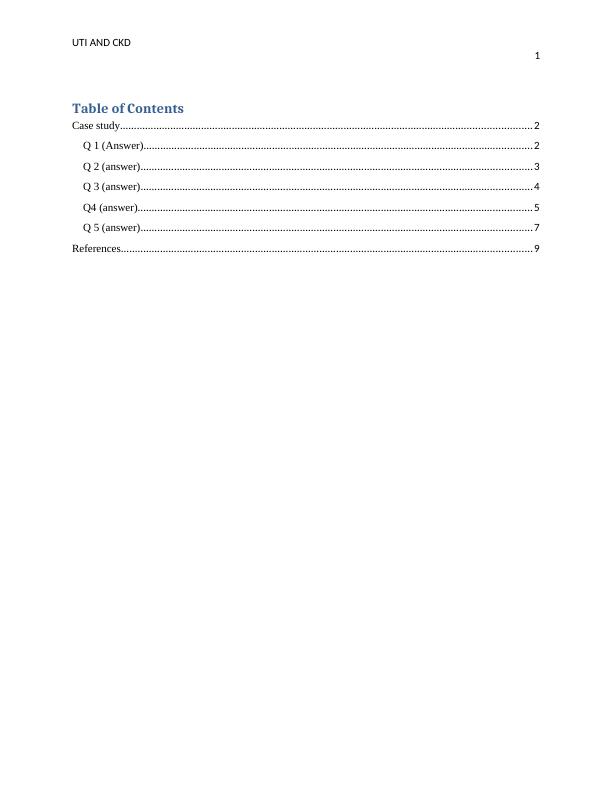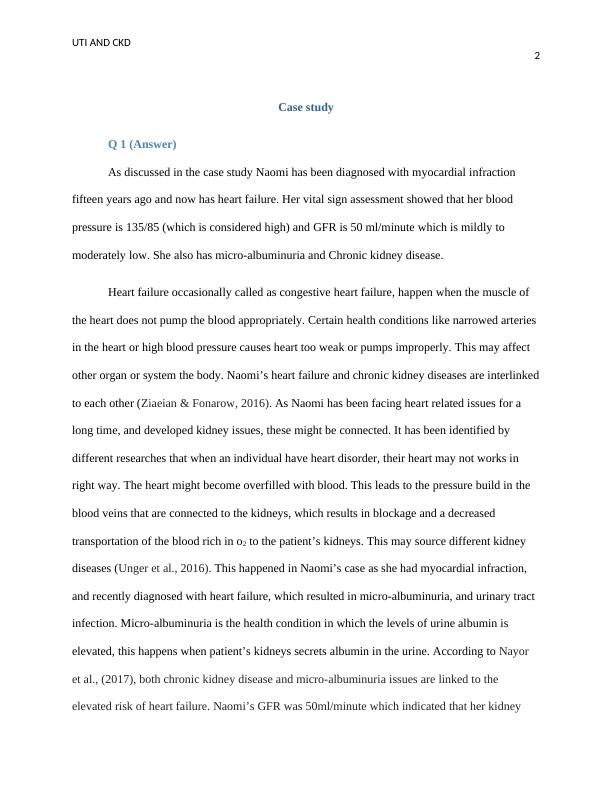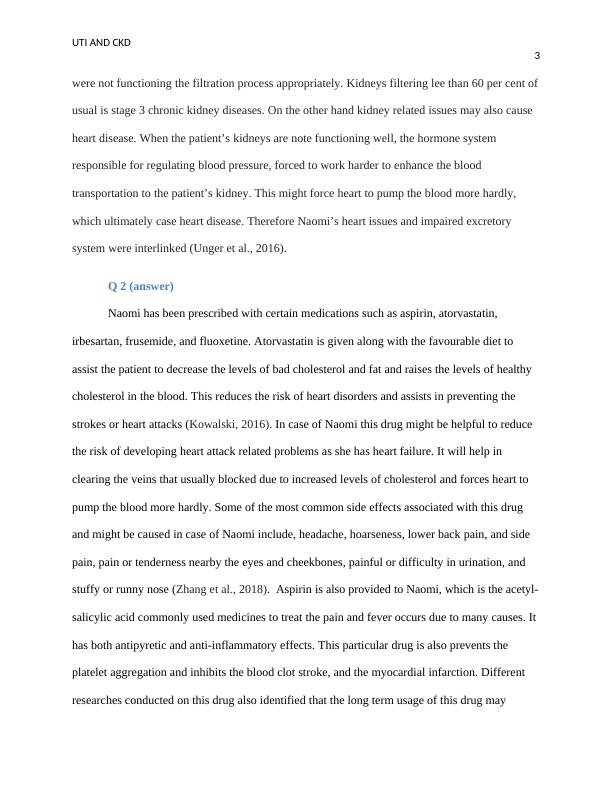UTI and CKD
Provide a response to Case Study A or Case Study B involving a 78-year-old male with primary stage 4 non-small cell lung cancer.
12 Pages2635 Words152 Views
Added on 2023-03-31
About This Document
This article discusses the case study of a patient with UTI and CKD, including medications prescribed, vital sign assessment, and potential adverse effects. It also explores the interconnection between heart failure and chronic kidney disease.
UTI and CKD
Provide a response to Case Study A or Case Study B involving a 78-year-old male with primary stage 4 non-small cell lung cancer.
Added on 2023-03-31
ShareRelated Documents
End of preview
Want to access all the pages? Upload your documents or become a member.
Heart failure in chronic kidney disease
|10
|2796
|68
Clinical Reasoning Cycle for Chronic Kidney Disease Case Study
|8
|2038
|473
Kidney and Associated Disorders
|11
|3252
|352




